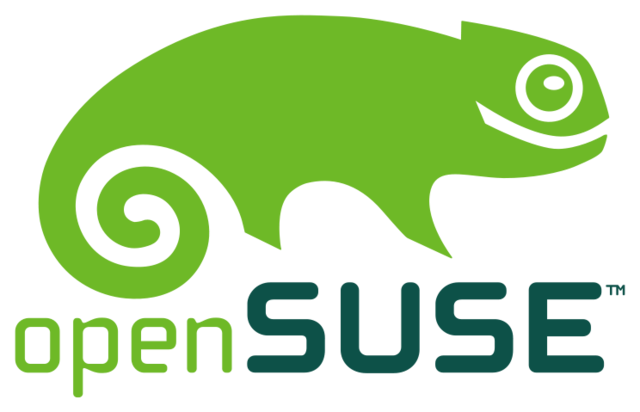Migrating from Fedora to openSUSE part4
17 de Novembro de 2010, 0:00 - sem comentários aindaMigrating to Fedora OpenSuse part4
Dropbox is not really an application but a service that use virtual disk to share my documents between different computers. It can also be used to perform backups. To install it just install the dropbox package for openSUSE available through the Software Management YaST module. In fedora I had to download the package directly from the site. Another advantage for openSUSE. More information about the service in http://www.dropbox.com
GnoMenu is an alternative menu for Gnome, very interesting with a high level of customization. I using it for some time and always found it better than others competitors. I created an openSUSE package for that. Click here to download. After installation finish, right click the taskbar and click "Add to Panel". Search for GnoMenu. This version is for intel / amd 64-bit (x86_64 arch). Soon I will make available the 32 bits version.
More information on GnoMenu https://launchpad.net/gnomenu https: / / launchpad.net / gnomenu
That's all Folks!
Migrating from Fedora to openSUSE part3
17 de Novembro de 2010, 0:00 - sem comentários aindaMigrating to Fedora OpenSuse part3
The video codecs are available through the gstreamer packages available in the distro. The same happens with the flash that owns the package (flash player). There are available two versions of Java: The sun version ( java-1_6_0-sun and java-1_6_0-sun-plugin ) and the openjdk version ( java-1_6_0-openjdk and java-1_6_0-openjdk-plugin ). Choose your favorite one and install it. Install the package chromium to navigate through Google Chrome engine and acroread to use Adobe Reader 9.
At this point I do not see much difference between the distros Ubuntu and openSUSE and Fedora. All distros offer these programs through their own repositories or repositories developed by the community, in short, the only concern is to find the repository that has the desired package, which as seen in the previous chapter, is an advantage for openSUSE.
Soon, more news on the road.
Migrating from Fedora to openSUSE part 02
17 de Novembro de 2010, 0:00 - sem comentários aindaSeguindo nossa série de artigos sobre como migrar de um ambiente Fedora para o openSUSE, hoje será apresentado a YaST, como configurar seus repósitório, instalação de programas. compiz.
Em ingles, segue então a tradução livre do artigo Migrando de Fedora para openSUSE escrito pelo também Embaixador openSUSE Alexandre Moura - Rasta! - Xnd
Migrating from Fedora to openSUSE part2
2.1 YaST
2.1 Repositories
Configuration for extras Repositories on openSUSE is very cool. He already has a search service for community repositories so by the YaST2 you can add/remove repositories. You do not need to have any intervention by a single command line. For less experienced users, this is great.
Following is a list of repositories I added in my installation:
name=Repositório principal (NON-OSS)
baseurl=http://download.opensuse.org/distribution/11.3/repo/non-oss/
name=Repositório principal (OSS)
baseurl=http://download.opensuse.org/distribution/11.3/repo/oss/
name=Repositório principal (Contrib)
baseurl=http://download.opensuse.org/repositories/openSUSE:/11.3:/Contrib/standard/
name=Repositório principal de atualização
baseurl=http://download.opensuse.org/update/11.3/
name=Packman Repository
baseurl=http://ftp.uni-erlangen.de/pub/mirrors/packman/suse/11.3/
Installation Program
The Software Management Module for YaST is very similar to the Fedora Package-Manager, and for who already uses it will get no problems to operate YaST Software Management module. A small difference is due to the solver, a script responsible for resolving packages conflicts and dependency problems. It allows a better administration management for the System Administrator who can even ignore the problems and keep the environment inconsistent. I do not think this is good for less experienced users. For more advanced users, there are other ways to do this. In my opinion point to Fedora in this topic.
CompizFusion / Sax2
Unfortunately this version 11.3, the Sax2 was left out. Sax2 configuration tool is a video, and I thought the differential openSUSE. Whenever I missed a tool like this in the other distros. Anyway, I had no problem with setting up video on my desktop. The hardware was detected and did not need to configure anything, just as it was with Fedora and Ubuntu. As for CompizFusion the openSUSE comes with a configuration module for Desktop Effects with some more features than Fedora and Ubuntu. But is less complete than the compizconfig-settings. Anyway, I liked this compiz setup tool, which is already integrated into the system, no need to install additional packages to set up some extra effects. Advantage for openSUSE.
At the end of this article, as a desktop I evaluate the openSUSE as a very good desktop, with some advantages compared to Ubuntu and Fedora, and some others, so let the three at the same level. In the next article we will talk about installing codecs and plugins (Java, Flash and videos) Google Chromium and Adobe Reader.
Tradução Livre
CarlosRibeiro


